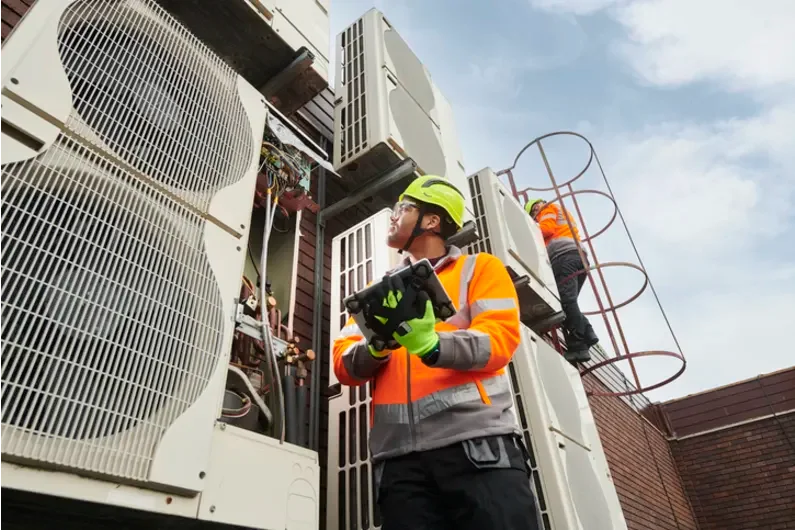Maintenance software programs are specialized tools designed to help organizations plan, manage, and execute maintenance tasks efficiently. These programs play a crucial role in ensuring that machinery, equipment, and other assets remain in optimal working condition by scheduling regular inspections and repairs. The primary aim is to reduce downtime and increase the lifespan of assets.
The software typically includes features such as work order management, asset tracking, inventory control, and compliance management. It enables maintenance teams to document procedures, track the history of equipment maintenance, and generate reports. With these features, organizations can keep a detailed record of all maintenance activities, making it easier to identify patterns and anticipate future needs.
Advanced maintenance software programs also incorporate predictive maintenance capabilities. These use data analytics and machine learning to predict potential failures before they occur. By leveraging real-time data, the software can alert maintenance teams to take pre-emptive actions, thus minimizing unexpected breakdowns and costly repairs.
In an increasingly complex industrial landscape, effective maintenance management has become indispensable. Maintenance software programs offer an efficient solution to tackling the myriad challenges associated with asset upkeep. From small-scale businesses to large corporations, these programs provide the tools necessary to streamline maintenance operations.
One of the primary benefits of utilizing maintenance software programs is the ability to maximize the lifespan of equipment and machinery. Regular maintenance activities are scheduled seamlessly, and potential issues are flagged before they escalate into costly problems. This proactive approach not only saves time and money but also enhances operational efficiency.
Moreover, these programs play a pivotal role in ensuring compliance with industry standards and regulations. Maintenance software programs facilitate meticulous record-keeping and reporting, ensuring that an organization’s maintenance activities are fully documented. This not only aids in audits but also promotes accountability and transparency within the maintenance team.
Importance of Maintenance Software in Modern Industries
In today’s fast-paced industrial environment, efficient operation is crucial. Maintenance software plays a vital role in achieving this objective. This type of software tracks assets, schedules regular maintenance, and monitors equipment performance. Consequently, it reduces downtime and increases productivity. Companies can avoid unexpected breakdowns through predictive maintenance features. This proactive approach allows businesses to plan and allocate resources more effectively.
Maintenance software fosters better data management. It stores all maintenance records in a centralized database. There is quick access to history and real-time updates, which aids in decision-making processes. The software also ensures compliance with industry regulations by keeping detailed logs. Moreover, automated notifications alert management to upcoming maintenance tasks, preventing overlooked schedules.
Besides improved efficiency, cost savings are another major benefit. By preempting equipment failures, industries save on emergency repair costs. Additionally, optimized maintenance schedules extend the lifespan of machinery. This long-term equipment reliability reduces the need for frequent replacements. Energy consumption is also minimized through well-maintained machines, contributing to lower operational costs.
Another important aspect is worker safety. Poorly maintained equipment poses risks. Using maintenance software, industries can ensure machinery is in good working condition. Regular inspections and timely repairs reduce the likelihood of accidents. Employees benefit from a safer working environment, which boosts morale and productivity.
Customization is a key feature of modern maintenance software. It can adapt to the specific needs of any industry. Different modules can be integrated based on requirements, whether it’s for manufacturing, healthcare, or transportation. This flexibility makes it an invaluable tool for diverse sectors.
In conclusion, maintenance software is indispensable in modern industries. It not only enhances efficiency and reduces costs but also ensures regulatory compliance and workplace safety. Adopting such technology is a prudent move for any forward-thinking business.
Key Features to Look for in Maintenance Software
Choosing the right maintenance software can significantly enhance the efficiency and effectiveness of your maintenance processes. Several key features should be prioritized when selecting this type of software.
Firstly, the software should offer robust asset management capabilities. This allows for tracking and managing all assets, from machinery to buildings. By having detailed information about each asset, maintenance can be scheduled proactively rather than reactively, reducing downtime and increasing longevity.
User-friendly interfaces are essential. Easily navigable software ensures that all team members can effectively use it, regardless of their technical expertise. Training time is minimized, and employees can quickly adapt to the new system. This enhances overall productivity.
Another critical feature is predictive maintenance tools. These tools utilize data and analytics to foresee potential issues before they occur. Transitioning from reactive to predictive maintenance can save both time and money. Early detection of problems enables timely intervention, preventing major failures and costly repairs.
Integration capabilities should not be overlooked. The software must seamlessly integrate with existing systems and tools. This integration ensures a smooth flow of information across different platforms, which is crucial for maintaining comprehensive and up-to-date records.
Real-time monitoring and alerts are vital for keeping operations running smoothly. The software should provide real-time data on asset performance, alerting maintenance teams of any irregularities immediately. Prompt notifications allow for quick responses to potential issues, reducing downtime.
Additionally, mobile accessibility is increasingly important. Maintenance teams often work in various locations, and having mobile access to the software ensures they can update and retrieve information on the go. This improves communication and ensures timely updates.
Finally, robust reporting features are essential for analyzing performance and making informed decisions. Detailed reports help in understanding trends, identifying areas for improvement, and planning future maintenance activities. Comprehensive reporting can greatly enhance strategic planning and operational efficiency.
Selecting maintenance software with these key features ensures an optimized maintenance process, leading to prolonged asset life and reduced operational costs.
Benefits of Using Maintenance Software for Preventive Maintenance
Preventive maintenance involves regular and systematic inspections, adjustments, and replacements of equipment to prevent sudden failures. Using maintenance software for preventive maintenance brings several key benefits. Firstly, maintenance software helps in planning and scheduling regular inspections and maintenance tasks, ensuring that nothing is overlooked. By doing so, equipment downtime is significantly reduced, leading to increased productivity.
Secondly, accurate tracking of maintenance activities is facilitated through the software. This documentation is essential for auditing and compliance purposes. Consequently, regulatory requirements are easier to meet, and there is always a historical record of maintenance performed on each piece of equipment.
Another significant advantage is the optimization of resource allocation. Maintenance software provides insights into when and where resources are needed most. Therefore, it ensures that the right personnel and parts are available when required. This leads to cost savings and more effective use of human resources.
Additionally, maintenance software enhances the lifespan of equipment. Regular preventive maintenance keeps machinery operating at optimal efficiency. Over time, this reduces the need for costly repairs and replacements. Moreover, the software can analyze data to predict potential failures before they happen, allowing for proactive interventions.
Inventory management is another area where maintenance software proves beneficial. By tracking spare parts and maintenance supplies, the software helps in maintaining optimal inventory levels. This avoids both shortages and excess stock, contributing to more efficient operations.
Implementing maintenance software also boosts safety conditions. Regular checks and timely maintenance prevent hazardous situations, protecting both the equipment and the personnel involved. As a result, a safer working environment leads to fewer accidents and injuries.
In conclusion, maintenance software for preventive maintenance offers numerous advantages, including improved planning, resource optimization, extended equipment lifespan, enhanced safety, and effective inventory management. By investing in such software, companies can achieve higher operational efficiency and reduce long-term costs.
How Maintenance Software Improves Asset Management
Maintenance software has revolutionized how companies handle asset management, providing numerous benefits that enhance efficiency. One of the primary advantages is improved tracking and monitoring. With real-time data, companies can keep a close eye on the status of their assets. This reduces the risk of unexpected failures and costly downtime. Additionally, it helps prioritize maintenance tasks based on the current condition of the assets.
Not only does maintenance software streamline asset tracking, but it also aids in preventive maintenance. Traditional methods often rely on reactive maintenance, addressing issues only after they occur. In contrast, maintenance software can predict potential problems before they escalate. This proactive approach extends the lifespan of assets and reduces the likelihood of unexpected breakdowns. Consequently, companies can save on repair costs and maintain smoother operations.
Another significant benefit is the improvement in resource allocation. Maintenance software provides detailed insights into resource utilization. Managers can allocate personnel, tools, and materials more effectively, based on actual needs. Thus, waste is minimized, and productivity is maximized. Furthermore, this software can generate comprehensive reports. These reports help in making informed decisions regarding asset management strategies.
Moreover, maintenance software enhances compliance with regulatory standards. By automating documentation and compliance tracking, it ensures that companies meet industry regulations. This not only avoids legal complications but also promotes a culture of accountability within the organization. An additional advantage is the improved communication it fosters. Maintenance teams can coordinate more efficiently, leading to quicker resolution of issues.
Lastly, integrating maintenance software with other business systems boosts overall organizational performance. When combined with financial or Enterprise Resource Planning (ERP) systems, the synergistic effect can optimize the entire business process. This integration helps in aligning maintenance activities with broader business objectives.
In summary, maintenance software significantly improves asset management by offering real-time tracking, predictive maintenance, resource optimization, regulatory compliance, enhanced communication, and system integration. These features collectively enable companies to operate more efficiently, ensuring the longevity and reliability of their assets.
Future Trends in Maintenance Software Technology
The field of maintenance software technology is evolving rapidly. Several key trends are shaping its future. One major trend is the integration of artificial intelligence (AI). AI algorithms analyze large datasets to predict equipment failures before they occur. Consequently, companies can reduce downtime and save costs. Another trend is the rise of the Internet of Things (IoT). IoT devices are increasingly being used to monitor equipment in real time. These devices collect data that is used to improve asset performance.
In addition, cloud-based solutions are gaining traction. These solutions offer scalability and flexibility. Maintenance teams can access data and tools from anywhere, thus improving their efficiency. Furthermore, mobile technology is becoming essential in maintenance operations. Technicians use mobile apps to receive work orders, log tasks, and access schematics on the go. This connectivity ensures that they are always informed and efficient.
Cybersecurity is also a growing concern. As more systems become interconnected, the need for robust security measures intensifies. Future maintenance software will likely include advanced security features to protect sensitive data. Additionally, augmented reality (AR) is making its way into maintenance processes. AR applications allow technicians to visualize complex systems and receive step-by-step guidance. This technology reduces error rates and speeds up repair times.
Moreover, sustainability is a rising priority. Maintenance software is increasingly designed to help organizations meet environmental goals. For instance, predictive maintenance reduces energy consumption and waste. Companies are also focusing on user-friendly interfaces. Easy-to-use systems streamline operations and require less training. These trends signal a future where maintenance software is smarter, more secure, and more user-centric.
Lastly, integration with enterprise resource planning (ERP) systems is becoming more common. This integration ensures that all departments have real-time access to maintenance data. Seamless data flow between systems enhances overall operational efficiency. Therefore, the future of maintenance software technology promises significant advancements.



